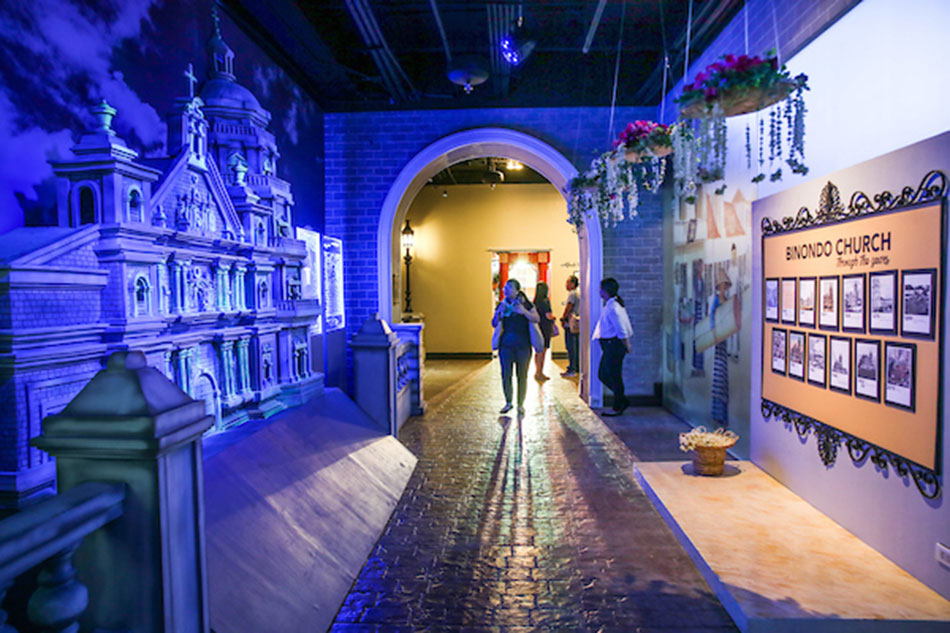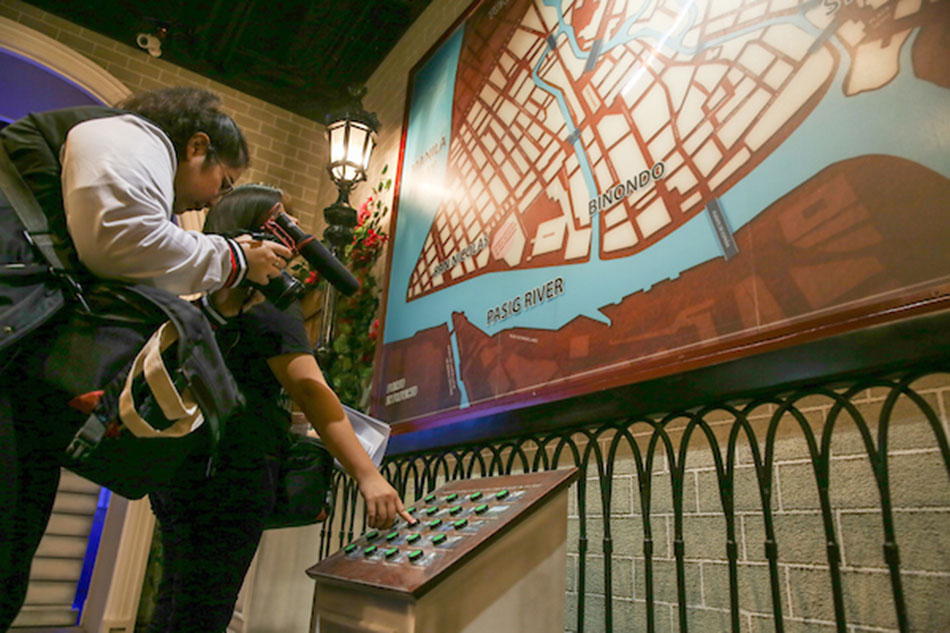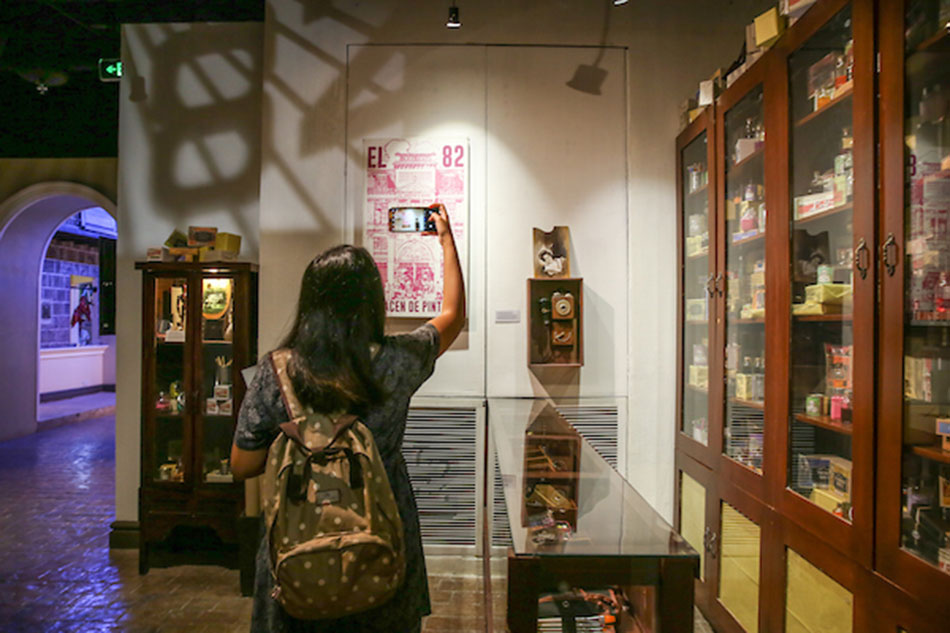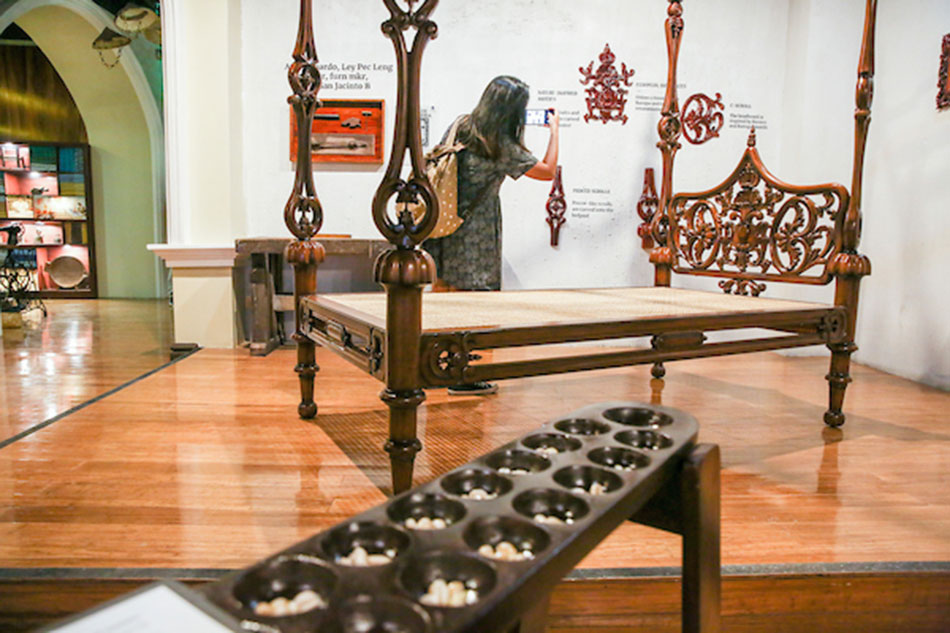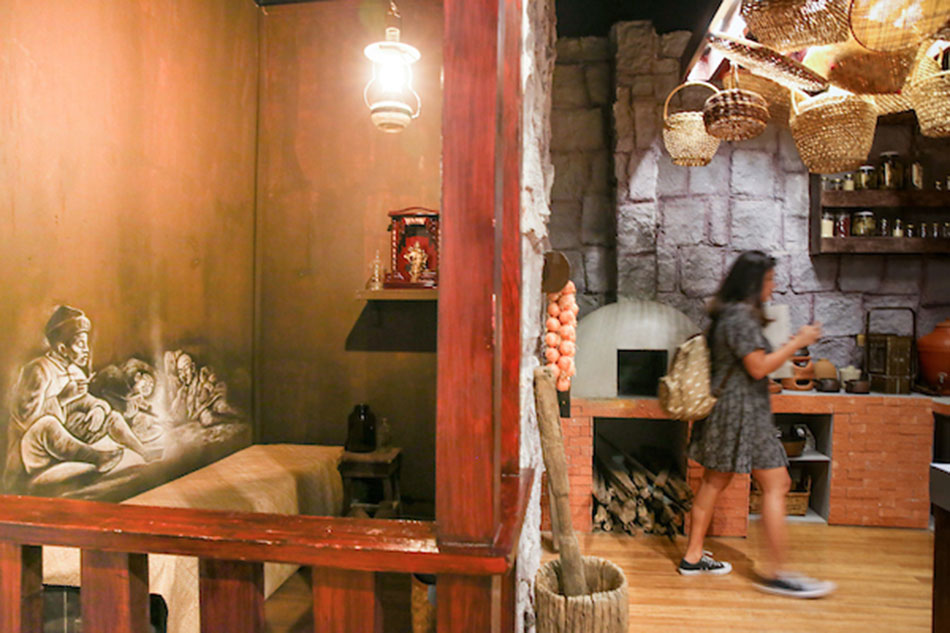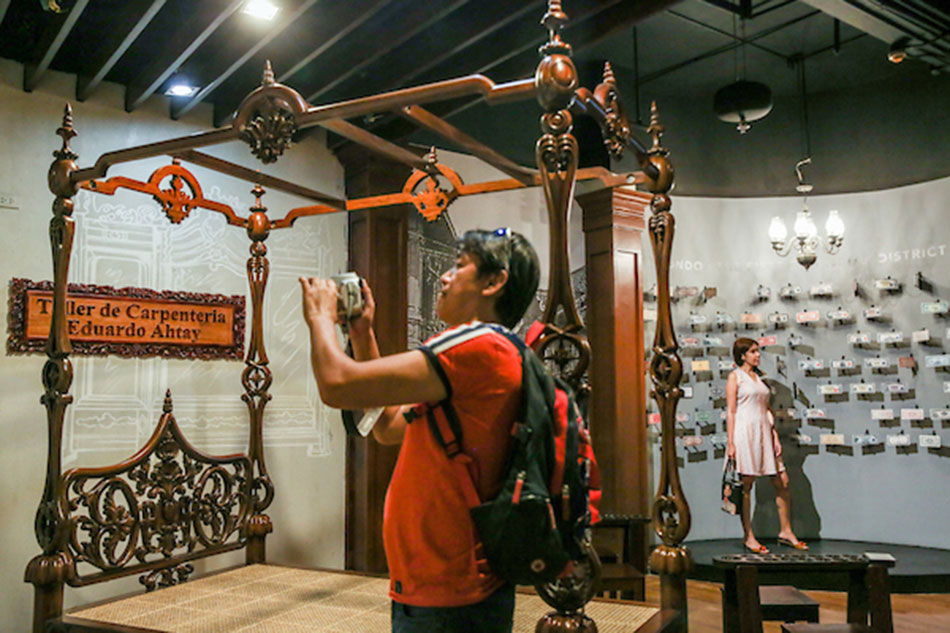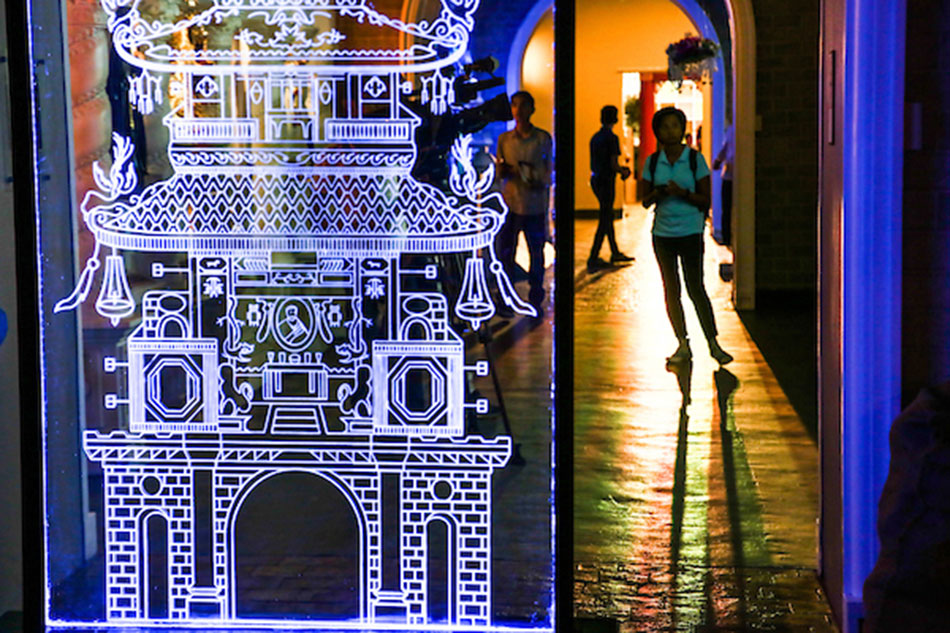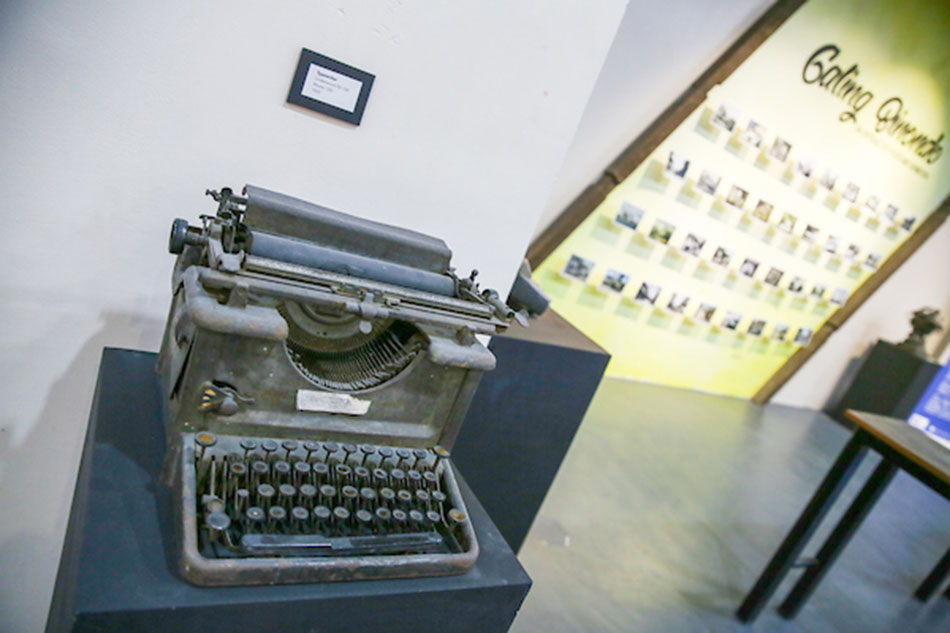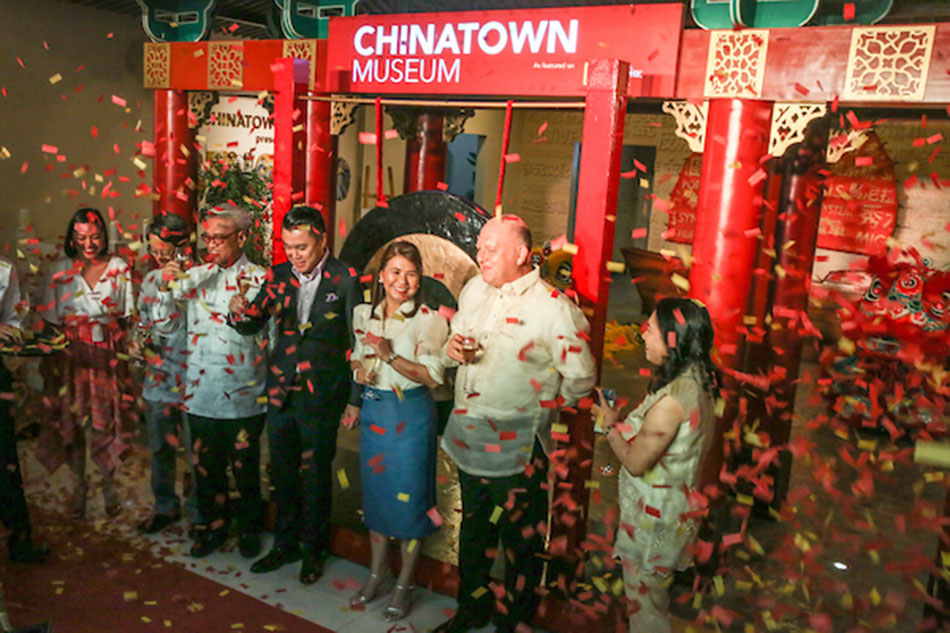LOOK: Museum in Binondo designed like little Chinatown | ABS-CBN

Welcome, Kapamilya! We use cookies to improve your browsing experience. Continuing to use this site means you agree to our use of cookies. Tell me more!
LOOK: Museum in Binondo designed like little Chinatown
LOOK: Museum in Binondo designed like little Chinatown
Kristine Sabillo,
ABS-CBN News
Published Jun 09, 2019 06:08 PM PHT
MANILA -- Ever wondered what an opium den looked like or how it feels like to sit inside a tranvia? These are just some of the things that you can see and experience when you visit the newly opened Chinatown Museum in Binondo.
MANILA -- Ever wondered what an opium den looked like or how it feels like to sit inside a tranvia? These are just some of the things that you can see and experience when you visit the newly opened Chinatown Museum in Binondo.
Located inside the Lucky Chinatown Mall, the museum features 18 galleries that give a glimpse of how life was like in Binondo through the last 400 years or so.
Located inside the Lucky Chinatown Mall, the museum features 18 galleries that give a glimpse of how life was like in Binondo through the last 400 years or so.
Before being ravaged by World War II and present-day urban decay, Binondo was the Philippines’ central business district.
Before being ravaged by World War II and present-day urban decay, Binondo was the Philippines’ central business district.
It was here that the country’s first three banks opened between the 1850s and 1880s – El Banco Esapnol-Filipino de Isabel (today’s BPI), Chartered Bank of India, Australia and China (now Standard Chartered Bank) and The Hong Kong and Shanghai Banking Corp. (HSBC).
It was here that the country’s first three banks opened between the 1850s and 1880s – El Banco Esapnol-Filipino de Isabel (today’s BPI), Chartered Bank of India, Australia and China (now Standard Chartered Bank) and The Hong Kong and Shanghai Banking Corp. (HSBC).
ADVERTISEMENT
Dr. Fernando Zialcita, anthropology professor at Ateneo de Manila University, said people used to go to Escolta to buy high-quality goods that came from Europe.
Dr. Fernando Zialcita, anthropology professor at Ateneo de Manila University, said people used to go to Escolta to buy high-quality goods that came from Europe.
“Binondo has actually been our gateway to the world,” Zialcita said. “It was here through which we were in contact with the Chinese, with the Indian, with Europeans.”
“Binondo has actually been our gateway to the world,” Zialcita said. “It was here through which we were in contact with the Chinese, with the Indian, with Europeans.”
He pointed out that it is considered by some as the first global city and one of the oldest Chinatowns in the world.
He pointed out that it is considered by some as the first global city and one of the oldest Chinatowns in the world.
He talked about how people from different nationalities would cross Jones Bridge on a daily basis.
He talked about how people from different nationalities would cross Jones Bridge on a daily basis.
“Binondo is really unique, very diverse,” he said, enumerating the kinds of shops seen there – furniture stores, opium dens, restaurants, pharmacies and other places of interest.
“Binondo is really unique, very diverse,” he said, enumerating the kinds of shops seen there – furniture stores, opium dens, restaurants, pharmacies and other places of interest.
ADVERTISEMENT
Throughout the museum, visitors will see iconic images of Binondo from the 16th century up to the present.
Throughout the museum, visitors will see iconic images of Binondo from the 16th century up to the present.
Visitors can enter stores and see products up close. The food made from plastic – from dumplings to pancit – all look appetizing.
Visitors can enter stores and see products up close. The food made from plastic – from dumplings to pancit – all look appetizing.
Janine Cabato, Chinatown Museum’s curator, said they made sure to make their displays are “Instagrammable” and appealing to the youth.
Janine Cabato, Chinatown Museum’s curator, said they made sure to make their displays are “Instagrammable” and appealing to the youth.
As expected, as soon as the museum was opened, a number of visitors whipped out their phones and started taking photos and selfies with the unique exhibits.
As expected, as soon as the museum was opened, a number of visitors whipped out their phones and started taking photos and selfies with the unique exhibits.
EXPERIENTIAL
But what makes the museum even more interesting – in addition to the multimedia presentations – are the exhibits that allow visitors to interact with the displays.
But what makes the museum even more interesting – in addition to the multimedia presentations – are the exhibits that allow visitors to interact with the displays.
ADVERTISEMENT
One botica (pharmacy) had a cabinet with drawers filled with all sorts of herbs and dried flowers. Visitors are encouraged to open each drawer and take a whiff of the common and not so common medicinal ingredients.
One botica (pharmacy) had a cabinet with drawers filled with all sorts of herbs and dried flowers. Visitors are encouraged to open each drawer and take a whiff of the common and not so common medicinal ingredients.
Across that is a gallery with sketches of architectural landmarks of Binondo. Here, visitors can study and make their own drawings using the cardboard and paintbrush supplied. The ink used disappears after three minutes, allowing the next visitor to have a clean slate for his drawing.
Across that is a gallery with sketches of architectural landmarks of Binondo. Here, visitors can study and make their own drawings using the cardboard and paintbrush supplied. The ink used disappears after three minutes, allowing the next visitor to have a clean slate for his drawing.
Meanwhile, riding the tranvia or tram involves watching an audio-visual presentation about its history.
Meanwhile, riding the tranvia or tram involves watching an audio-visual presentation about its history.
“'Yan ang hinahanap ngayon ng new audiences ng museums. Ayaw na nila ng mga objects sa loob ng salamin. Gusto nila nakikita nila at nafi-feel nila,” said Dannie Alvarez, head of the Committee on Museums of the National Commission for Culture and the Arts.
“'Yan ang hinahanap ngayon ng new audiences ng museums. Ayaw na nila ng mga objects sa loob ng salamin. Gusto nila nakikita nila at nafi-feel nila,” said Dannie Alvarez, head of the Committee on Museums of the National Commission for Culture and the Arts.
(That’s what new audiences of museums are looking for. They don’t want to see objects inside glass cases anymore. They want to see and feel the displays.)
(That’s what new audiences of museums are looking for. They don’t want to see objects inside glass cases anymore. They want to see and feel the displays.)
ADVERTISEMENT
CONNECTION YOUNG AND OLD
Tefel Pasigan-Valentino, vice president and head for marketing and business development of Megaworld Lifestyle Malls, said they made the museum in line with their chairman Andrew Tan’s vision.
Tefel Pasigan-Valentino, vice president and head for marketing and business development of Megaworld Lifestyle Malls, said they made the museum in line with their chairman Andrew Tan’s vision.
“Our chairman actually originated here in Binondo and he shares the success story of Binondo,” she said.
“Our chairman actually originated here in Binondo and he shares the success story of Binondo,” she said.
She said the Chinese-Filipino billionaire wanted to give back to the community and that “the museum is a testament to what the community is about.”
She said the Chinese-Filipino billionaire wanted to give back to the community and that “the museum is a testament to what the community is about.”
Tan’s son, Kevin Tan, who is now CEO of Alliance Global Group Inc., said Binondo “inspired his (father’s) dreams to be an entrepreneur.” The younger Tan also talked about their company’s plan to “integrate, art, culture, history and heritage in their developments.”
Tan’s son, Kevin Tan, who is now CEO of Alliance Global Group Inc., said Binondo “inspired his (father’s) dreams to be an entrepreneur.” The younger Tan also talked about their company’s plan to “integrate, art, culture, history and heritage in their developments.”
Older members of the Chinese Filipino community were pleased with how the museum was designed.
Older members of the Chinese Filipino community were pleased with how the museum was designed.
ADVERTISEMENT
“It is very interesting, especially for the younger generation,” said retired chemist Anita Sy, who said it was a pity that young members of their community are no longer familiar with the history of Binondo.
“It is very interesting, especially for the younger generation,” said retired chemist Anita Sy, who said it was a pity that young members of their community are no longer familiar with the history of Binondo.
Meanwhile 34-year-old Eric Acabal, who works as a computer engineer, said he plans to bring his young daughter to the museum soon.
Meanwhile 34-year-old Eric Acabal, who works as a computer engineer, said he plans to bring his young daughter to the museum soon.
“I discovered a lot. It was my first time to see all our old currencies,” he said, referring to the gallery on Binondo’s banks.
“I discovered a lot. It was my first time to see all our old currencies,” he said, referring to the gallery on Binondo’s banks.
In a week or so, the museum will release its own app so visitors can receive more multimedia content while going around the exhibits.
In a week or so, the museum will release its own app so visitors can receive more multimedia content while going around the exhibits.
Pasigan-Valentino said they will be using the proceeds from the tickets to further improve the museum and to fund other activities for the community.
Pasigan-Valentino said they will be using the proceeds from the tickets to further improve the museum and to fund other activities for the community.
ADVERTISEMENT
A ticket costs P150 but students can get in for P100 and senior citizens for P120. Children below four feet may enter for free. The museum is open from Tuesdays to Sundays.
A ticket costs P150 but students can get in for P100 and senior citizens for P120. Children below four feet may enter for free. The museum is open from Tuesdays to Sundays.
ADVERTISEMENT
ADVERTISEMENT


